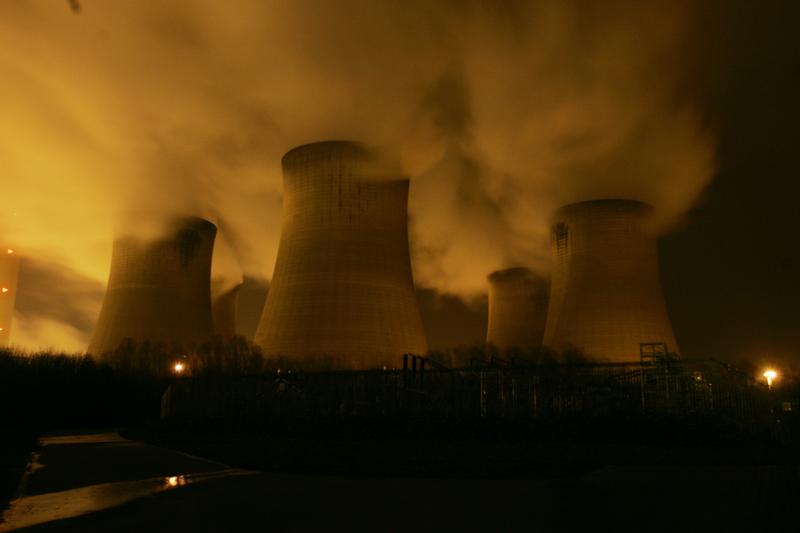BREF: European air standards worse than China’s

Europe’s proposed new environmental regulations for coal-fired power plants – called BREF – threaten to set weaker air pollution standards than China, according to a new analysis.
The BREF draft document, which will likely be adopted in early 2016 ahead of EU-wide implementation by 2020, outlines air emission standards that fall far short of the ‘best available techniques’ that EU law requires it be based on, Greenpeace research has revealed.
According to its report Smoke and Mirrors, which arrives just days after the European Environment Agency warned that European air pollution could cause hundreds of thousands of premature deaths, many coal-fired power plants across the country have already capped emissions at levels well below the BREF limits.
Even China, where pollution problems are well documented, has tougher air emission standards than that which the EU is currently exploring (see graph below).
Emissions limits for nitrogen oxides (NOx) and sulphur dioxide (SO2) – which contribute to dangerous air pollution from coal burning – for China’s new power plants are more than half of what the EU is putting forward.
The study also observes that more than half of the Technical Working Group, which plays a vital role in writing the regulations, represents the fossil fuel industry, for whom stringent air quality standards could require significant outlay.
The UK, along with the Polish, Czech, Greek, German, French and Spanish delegations, is reported to have filed most of the objections to strong standards, and many of these intervening nations also have the continent’s largest coal sectors.
‘Best available technique’ Reference document.
It sets out different environmental performance standards for big industrial plants including coal and lignite plants.
Under BREF, existing large coal plants would be allowed to emit almost twice as much as new facilities, though many would still be required to retrofit what is defined as the ‘best available technique’ for managing emissions.
The years-long bureaucratic labyrinth that was negotiated to reach this point suggests that BREF, once fully implemented, may remain Europe’s air pollution point-of-reference longer even than the eight years the EU intends.
The regulations refer to the four key toxic pollutants commonly found in the power plant smokestack: Sulphur dioxide, nitrogen oxide, particulate matter, and mercury.
Though several of Europe’s best performing plants emit less than 60 mg/m3 sulphur dioxide annually, the current draft BREF is recommending a limit twice that for existing ones.
As the chart above shows, a large number of Chinese power plants emit far less than BREF would require — which suggests the proposed EU regulations do not accurately reflect the capabilities of the ‘best available techniques’.
The same largely applies to nitrogen oxide emissions, for which EU limitations are strikingly lax when compared to high-performing plants in Japan, China, and the US as well.
The best performing European plants emit as little as 50 mg/m3 but the BREF draft currently limits emissions at 100 — and goes as high as 180 for existing plants.
Europe is currently home to several fossil fuel energy facilities that emit 75% less particulate matter than BREF’s proposed limit.
As the above infograph illustrates, the average European power plant releases about 20 mg/m3 and BREF would ensure that figure fell below that benchmark.
But the ‘best available techniques’ the regulations purports represent can cap PM emissions at around 5 mg/m3 or even less than that.
The Greenpeace report also listed who was part of the Technical Working Group on the BREF project, and what their affiliation was: 183 of the 352 TWG members are paid by the industry, including 137 whose places were set aside by the EU for industry.
Five of the UK’s nine delegates were industry-paid representatives, though that’s not as high a proportion as the six out of six Croatian industry officials or the seven out of seven Greeks.
Over 400,000 people in Europe have died prematurely as a result of breathing in polluted air using 2011 data, the recent EEA figures estimate. A separate study focused on air pollution from Europe’s coal plants estimated around 22,000 premature deaths a year.
On top of that, air pollution also causes non-fatal illnesses, such as respiratory and heart disease, and lung cancer.
Burning coal, and especially lignite (brown coal), releases more CO2 into the atmosphere compared to other fossil fuels, so is a significant contributor to climate change.

